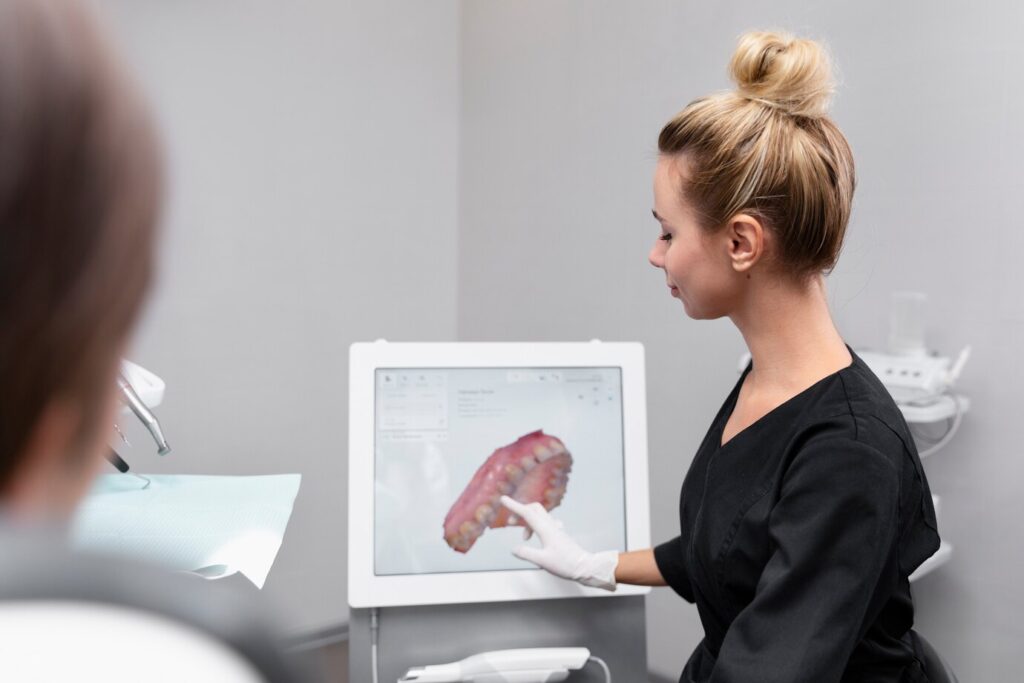Oral Cancer Screening

Oral cancer screening involves looking for signs of cancer or precancerous conditions in the mouth and throat. Here are some things to know about oral cancer screening:
- Who should be screened: The American Dental Association recommends that adults have an oral cancer screening at least once a year during their regular dental checkup.
- How it’s done: During an oral cancer screening, your dentist or doctor will examine your mouth and throat for any unusual changes, such as sores, lumps, or white or red patches. They may also feel for any lumps or abnormalities in your neck or under your jaw.
- Benefits of screening: The main benefit of oral cancer screening is that it can detect cancer or precancerous conditions early, when they are more treatable. Early detection may also increase the chances of being cured of the disease.
- Risks of screening: There are no risks associated with oral cancer screening.
If your dentist or doctor finds any abnormalities during an oral cancer screening, they may recommend further testing, such as a biopsy, to determine if the abnormality is cancerous. It’s important to report any unusual symptoms in your mouth or throat, such as persistent pain, difficulty swallowing, or a persistent sore or lump, to your dentist or doctor. Additionally, reducing your risk of oral cancer through healthy habits such as avoiding tobacco and excessive alcohol use, and practicing good oral hygiene, can help lower your risk of developing the disease.
